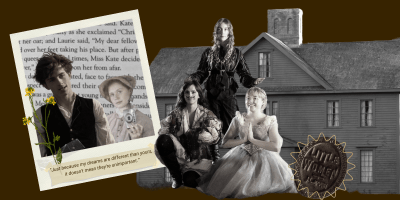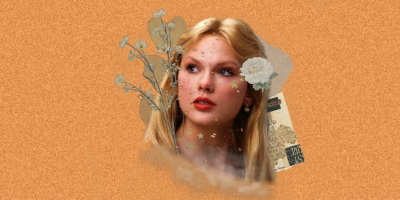
There are endless classical works written by remarkable authors who have shifted perspectives and have introduced new beliefs and worlds, like The Picture of Dorian Gray by Oscar Wilde, which encapsulates the idea of youth, philosophy, art and the influence of others on a human being and the consequences of our sins catching up to us.
The story opens with artist Basil Hallward and Lord Henry Wotton discussing the new portrait of a young man that Basil painted, and Lord Henry insists on it being sent to Grosvenor, also known as the Royal Academy of Arts or Burlington House in Piccadilly, London. However, Basil refuses and says he put too much of himself into the portrait, so he cannot send it anywhere to display. The man’s beauty and charm in the painting consume Basil and Lord Henry, and they romanticize and glorify the essence and importance of his youth.
Once Lord Henry meets the man in the portrait called Dorian Gray, he occupies his thoughts with how lucky he is to be young and how when it all slips away, there is no true meaning in life and that he should enjoy the current years of his life because they will not return. For instance, he says, “Because you have the most marvelous youth, and youth is the one thing worth having.” Eventually, Dorian gets upset, and his mind becomes infested with the fear of growing old and how that will affect him.
Dorian takes his portrait to his home, and one day, he notices that the appearance of the painting has changed in some way, but he cannot precisely pinpoint how. As a result, he gets scared and covers the painting with a veil so he does not have to look at it constantly.
Dorian is afraid to disclose his worries and observations because he thinks they are all in his head and they are driving him to insanity. He then proceeds to notice how, as time passes, his physical appearance stays the same; however, the painting gets older, uglier, and gross, raising a million questions in his head.
Alas, even though the years do not take away an ounce of his youth or beauty, they take away slivers of his soul bit by bit. The monster in the portrait drives him to the point of hurting people and self-deception. Eventually, when his servants find him lying on the floor, they see a man they do not recognize and a portrait that looks exactly like their master.
The story itself is beautifully written, and the course of it is structured in a way where all the puzzle pieces from before come together and reveal something greater than the reader expects.
Moreover, I liked the philosophical aspect of the story and how it raises relevant questions human beings often deal with such as the meaning of life, the ideals we strive to reach, and what we should consider valuable. Since Oscar Wilde is mainly a poet and a playwright, the Picture of Dorian Gray is his only novel that reflects a poetic nature and harmony to the text.
It is not an easy read due to its multilayered context and vocabulary. The book is multifaceted and offers various perspectives instead of one narrative, allowing the reader to see the story’s message in different ways, such as art, philosophy, and social constructs. I also enjoyed the mention of colors in the story and how they added a touch of magic while I was reading, and it felt like the scene coming to life.
Also, there are many historical references to countless figures, and even with the short descriptions, I still found them hard to read because I felt as if one or two examples were enough to gain perspective into Dorian’s mind.
Finally, I wanted to gain more insight into some characters’ minds, like Sybil’s, and know more about her life and thoughts because she seemed like a surface-level character with little to no importance to the plot. Her character was solely being portrayed as Dorian’s lover, and Lord Henry did not miss an opportunity to belittle her and her skills as an actress. Also, as soon as she displayed a flaw in her character, she was torn apart and pushed to the side. Because of her infatuation with Dorian, she was portrayed as an obsessive and blinded by love woman.
The story, for me as a reader, was a slow burn, but the immense detail and description make it difficult to put the book down because you wonder what the result of Dorian’s life will be. Oscar Wilde combines Victorian societal issues of the time and applies them to the story and although written in 1891, we can still find similarities between today’s constructs and that time’s beliefs.
The story’s ending seems perfect because it illustrates how life is bound to not only appearance, youth, charm and material things but also the beauty of your soul and how you treat others around you.
The Picture of Dorian Gray was truly wonderful and the ending was unexpected. Even though the buildup was apparent, the events were like a shadow creeping up on you. If you are looking for a classic that is not too time-consuming, and if you have a passion for poetry and art, I definitely recommend this as your next read.













